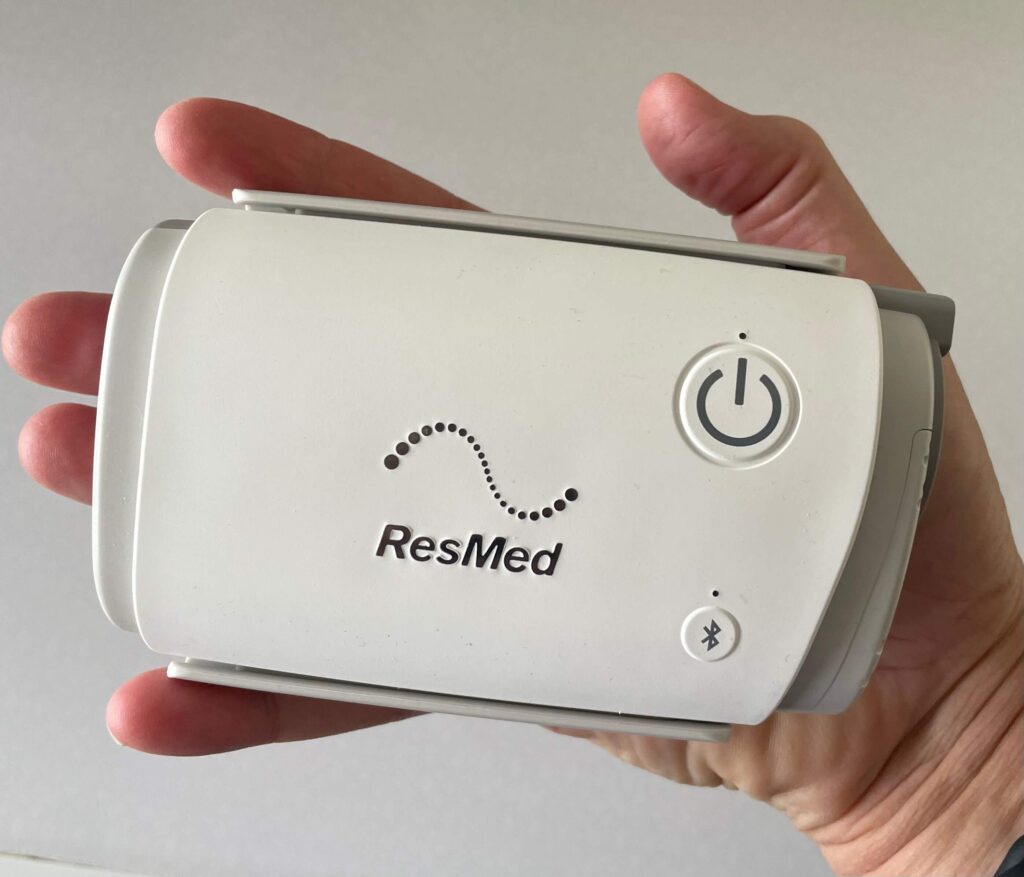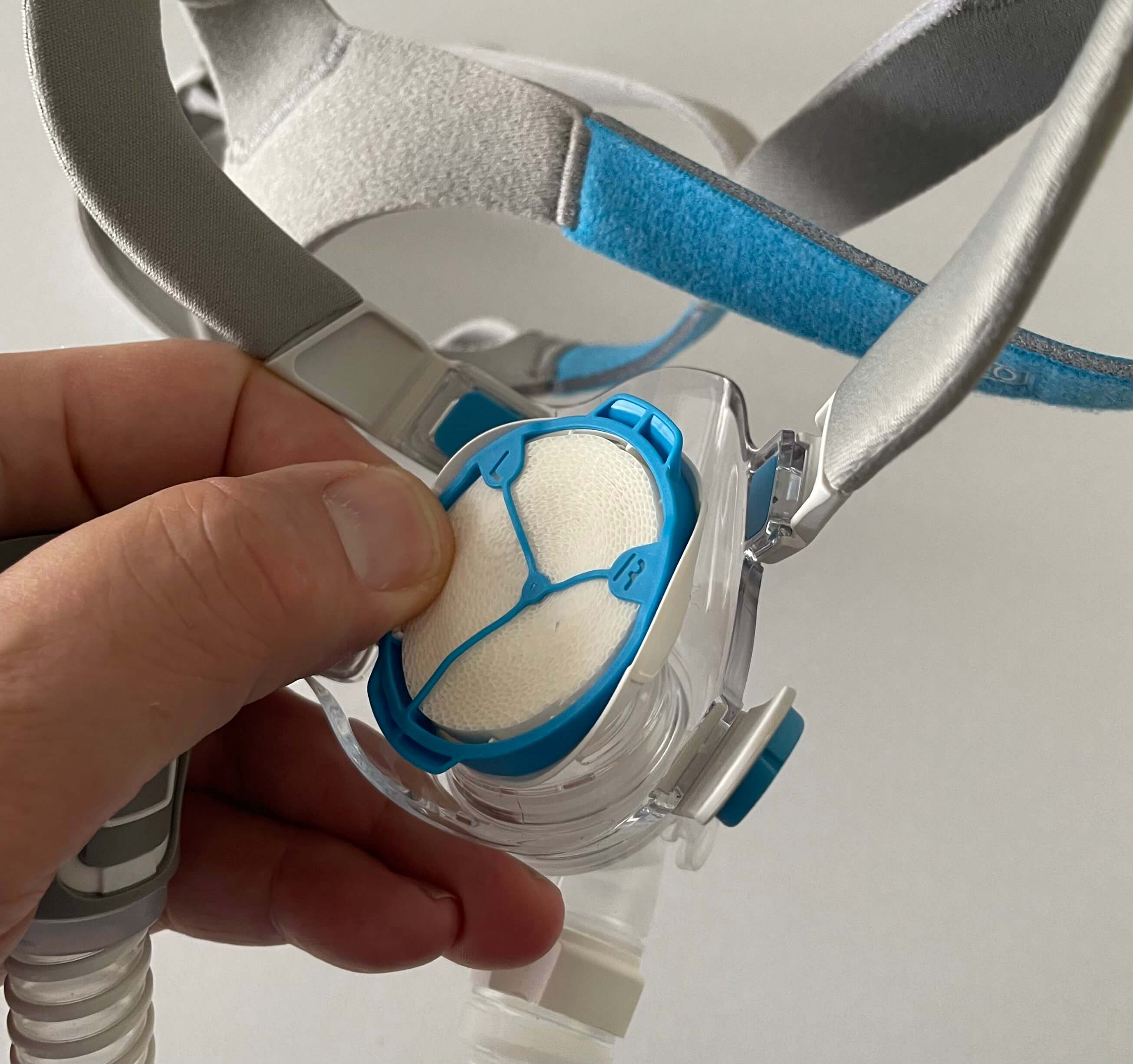ResMed AirMini AutoSet Travel CPAP
“This post contains affiliate links. I may earn a commission if you buy through these links, at no extra cost to you. Read my Disclaimer for more details.”
Welcome to my travel experiences with the ResMed AirMini AutoSet Travel CPAP.

In this post, I will be sharing my experiences of owning a ResMed AirMini AutoSet Travel CPAP and taking it on a long-haul plane and around Europe.
I’ll go through the unboxing, the differences between owning a regular and a mini, and whether I think it would be a good purchase for you.
I’ve had a regular bedside CPAP machine for about 5 years now. Two years ago I took it with me on a trip to Europe, and it was a bit much to carry around, and I couldn’t use it on the plane because it’s bulky and there was nowhere to plug it in.
So for my next European adventure, I decided it was time to buy a ResMed mini CPAP travel machine, together with a battery pack.
Unboxing
Unboxing the machine was a pleasure. And as I opened it, it was easy to see how everything plugs together.

To give you some sense of size, here is the mini CPAP machine in my hand.

How does a mini CPAP work?
The CPAP mini is a small version of a regular CPAP machine with two components missing – The humidifier tray and the display panel. This keeps it small.
Instead of needing a humidifier, you get a clip-on Heat Moisture Exchanger filter which should be changed about once a month.

And look at this App. This replaces the display you have on a bedside CPAP machine. Wow look at my score!

This was after my third night of usage. It took a little getting used to, which I’ll cover below.
First thoughts using the mini CPAP
All the components come with thick instruction books because they are medical devices.
But it’s simple to assemble. You plug the power lead into the machine on one end, and the hose on the other.
Getting that filter to clip on was a bit tricky. I turned it around and around, trying to get it to clip in place. Then I realized it had a L and a R on it. Doh!
The first time I used the mini, it was obvious that this machine was louder than the normal type. Not a lot louder, but it’s noticeable. This is because the filter in the mask interrupts your breath flow causing noise.
I spent the first night just getting used to the machine, but by the third, I achieved the impressive 99% score shown above. Reducing my events per hour to 3.7 is incredible, especially considering that without it, I had 60 events per hour.
A major noticeable difference I found between my Travel Mini and my regular bedside ResMed 10 is the noise. It is distincively louder. This is because of the filter you have to put in the mouth piece breaks up the airflow causing the noise.
Long Haul Flight
This is why I bought this machine. It was to do the long-haul flight between Singapore and London which is between 12 and 13 hours.

Okay, I’ll admit—I’m just pretending to be asleep for this photo, but I was genuinely impressed. As I mentioned earlier, the mini is a bit noisy, but the plane’s background noise completely drowned it out. After taking this picture, I actually got a nice sleep.
This was a game-changer for me. I’ve always been acutely aware of my terrible snoring and it has held me back in the past from camping, and hostelling, and generally travelling. I believe this neat little device will open up all whole new world for you too.
I think an obvious question would be if you should consider buying a mini CPAP travel machine as your only CPAP machine. I would recommend not to.
I know it’s a luxury having both, but the regular bedside type is far better for day-to-day usage. It’s much quieter and I find it more comforting. It sounds a bit weird but it’s like a pacifier to me, and I now find it hard to sleep without it.
If you have any questions about the Travel Mini or its usage, please comment below.
Please remember, that I am not a health professional or remotely qualified in any way to diagnose your issues, but I’m here to offer you some friendly advice.
ResMed AirMini AutoSet Travel CPAP review.





